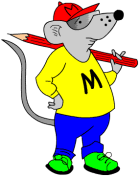 Some more lists to make with these two maths worksheets, this time for year 2 children. By this age there are a large number of opportunities in the home for making and organising lists. Apart from the obvious shopping, going on holiday is a great source for list making – what clothes do we take, what food in the car etc etc. Jobs to do in the garden, flowers we have, TV programmes etc etc. You can also begin to categorise the lists into two sections: likes and dislikes, hot meals, cold meals, take aways, home cooking and so on.
Some more lists to make with these two maths worksheets, this time for year 2 children. By this age there are a large number of opportunities in the home for making and organising lists. Apart from the obvious shopping, going on holiday is a great source for list making – what clothes do we take, what food in the car etc etc. Jobs to do in the garden, flowers we have, TV programmes etc etc. You can also begin to categorise the lists into two sections: likes and dislikes, hot meals, cold meals, take aways, home cooking and so on.
Why do this? Because it helps with organising and classifying information which is very important later when creating graphs, using venn diagrams etc.
 Two kinds of question here. Firstly doubling whole tens, which should prove straightforward as long as doubling single digits is well established: if double 6 is known to be 12 then doubling 60 to get 120 can be derived quickly.
Two kinds of question here. Firstly doubling whole tens, which should prove straightforward as long as doubling single digits is well established: if double 6 is known to be 12 then doubling 60 to get 120 can be derived quickly. Now we have two free maths worksheets which are all about counting back in tens. These two pages keep to whole tens, but they do cross the hundreds boundary. Counting down in tens from 120 might cause a few problems to begin with. It is best to do this out loud and again fingers can be used as an aid – one finger for each whole ten. In year 2 children are not expected to count below zero – although the more inquisitive might ask what happens.
Now we have two free maths worksheets which are all about counting back in tens. These two pages keep to whole tens, but they do cross the hundreds boundary. Counting down in tens from 120 might cause a few problems to begin with. It is best to do this out loud and again fingers can be used as an aid – one finger for each whole ten. In year 2 children are not expected to count below zero – although the more inquisitive might ask what happens.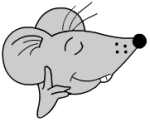 In year 1 children will have begun to count in whole tens up to 100, but many of them will not be confident in doing this. Don’t even begin this until they are very confident with counting up in ones.
In year 1 children will have begun to count in whole tens up to 100, but many of them will not be confident in doing this. Don’t even begin this until they are very confident with counting up in ones. The ruler, with whole centimetres on, is introduced in Year 2. It is possible, but not easy, to get rulers with just cm on. You will probably have to make do with a ruler with both cm and mm on. These two worksheets look at short, straight lines and ask for a comparison: which is longest? Your children can measure these lines with a ruler but before they do so always ask them to have a guess (or estimate) about how long they think they are in centimetres. This is a habit which they should get into early and always keep!
The ruler, with whole centimetres on, is introduced in Year 2. It is possible, but not easy, to get rulers with just cm on. You will probably have to make do with a ruler with both cm and mm on. These two worksheets look at short, straight lines and ask for a comparison: which is longest? Your children can measure these lines with a ruler but before they do so always ask them to have a guess (or estimate) about how long they think they are in centimetres. This is a habit which they should get into early and always keep!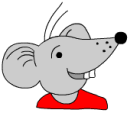 By the end of year 2 (children aged between 6 and 7) children are expected to know doubles of all numbers up to 20 and to be able to quickly derive halves. This is quite a tall order, so plenty of practice and repetition is needed. The first of these pages gives you examples of the type of questions to ask and there is still a place for using apparatus (coins, counters etc) to double or half amounts. The second is an example of doubling numbers in the teens. Don’t go onto these until your child is very confident and knowledgeable about doubling single figures.
By the end of year 2 (children aged between 6 and 7) children are expected to know doubles of all numbers up to 20 and to be able to quickly derive halves. This is quite a tall order, so plenty of practice and repetition is needed. The first of these pages gives you examples of the type of questions to ask and there is still a place for using apparatus (coins, counters etc) to double or half amounts. The second is an example of doubling numbers in the teens. Don’t go onto these until your child is very confident and knowledgeable about doubling single figures.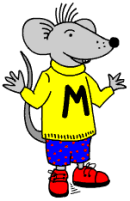 These worksheets are from the Using and Applying Maths section of the Primary Framework for Maths. In schools this strand is considered very important as it shows how well children understand the maths that they have learned and how well they can apply it to different situations. Both these worksheets look at subtraction and making up number sentences. Think of subtraction as taking away one number from a larger number and try to encourage writing three short sentences using the numbers provided, but using different ideas from those provided.
These worksheets are from the Using and Applying Maths section of the Primary Framework for Maths. In schools this strand is considered very important as it shows how well children understand the maths that they have learned and how well they can apply it to different situations. Both these worksheets look at subtraction and making up number sentences. Think of subtraction as taking away one number from a larger number and try to encourage writing three short sentences using the numbers provided, but using different ideas from those provided. Not so much worksheets as some ideas on what to do to encourage recognition and understanding of shapes. It is using the vocabulary of shape which is crucial at this stage and asking children to describe the features of shapes is a good way to do this.
Not so much worksheets as some ideas on what to do to encourage recognition and understanding of shapes. It is using the vocabulary of shape which is crucial at this stage and asking children to describe the features of shapes is a good way to do this.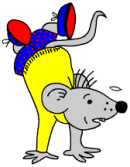 Here we have 2 free maths worksheets of a slightly different nature. The total for the answer is given and it is the two numbers to make the answer which are needed. Each problem asks for two solutions. Obviously there are several options using whole numbers to make a total such as 13. Some children will go for the easy option and choose 12 + 1, whilst others will go for harder sums such as 7 + 6.
Here we have 2 free maths worksheets of a slightly different nature. The total for the answer is given and it is the two numbers to make the answer which are needed. Each problem asks for two solutions. Obviously there are several options using whole numbers to make a total such as 13. Some children will go for the easy option and choose 12 + 1, whilst others will go for harder sums such as 7 + 6. A couple of speed trials aimed to improve rapid recall of basic addition and subtraction facts. Eventually knowledge of addition of single digits should become second nature – children do not need to work them out, but know them just like they know their name! Subtraction facts can then quickly be worked out from this knowledge.
A couple of speed trials aimed to improve rapid recall of basic addition and subtraction facts. Eventually knowledge of addition of single digits should become second nature – children do not need to work them out, but know them just like they know their name! Subtraction facts can then quickly be worked out from this knowledge.